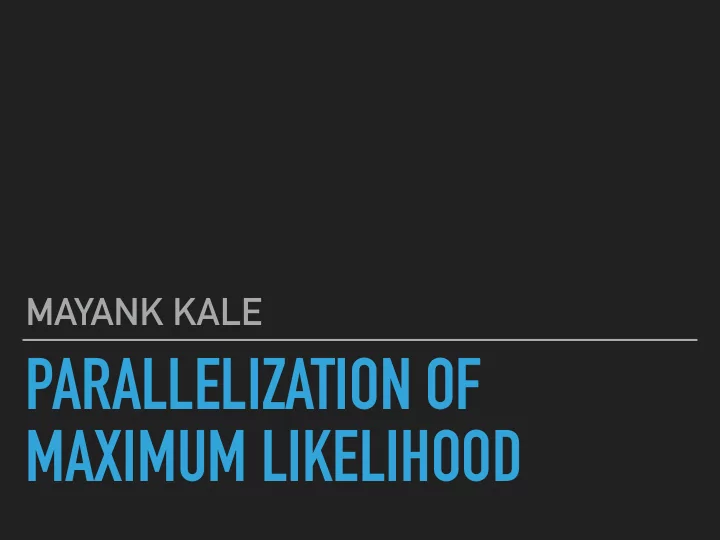

MAYANK KALE PARALLELIZATION OF MAXIMUM LIKELIHOOD
MOTIVATION ▸ To analyze large amount of data using computationally intensive, model-based optimality criterion such as maximum likelihood (ML), there must be development in parallel and distributed algorithms for ML analysis.
MAXIMUM LIKELIHOOD ▸ Maximum likelihood is a general statistical method for estimating unknown parameters of a probability model. ▸ In phylogenetics there are many parameters, including rates, differential transformation costs, and, most important, the tree itself. ▸ Likelihood is defined to be a quantity proportional to the probability of observing the data given the model, P(D|M).
ALGORITHMS ▸ GAML Genetic Algorithm ▸ GARLI Genetic Algorithm ▸ fastDNAmL
BIBLIOGRAPHY ▸ Matthew J. Brauer, Mark T. Holder, Laurie A. Dries, Derrick J. Zwickl, Paul O. Lewis, David M. Hillis; Genetic Algorithms and Parallel Processing in Maximum-Likelihood Phylogeny Inference. Mol Biol Evol 2002; 19 (10): 1717-1726. doi: 10.1093/oxfordjournals.molbev.a003994 ▸ Zwickl, D. J. (1970, January 01). Genetic algorithm approaches for the phylogenetic analysis of large biological sequence datasets under the maximum likelihood criterion. Retrieved April 18, 2017, from http:// hdl.handle.net/2152/2666 ▸ Gary J. Olsen, Hideo Matsuda, Ray Hagstrom, Ross Overbeek; fastDNAml: a tool for construction of phylogenetic trees of DNA sequences using maximum likelihood. Bioinformatics 1994; 10 (1): 41-48. doi: 10.1093/bioinformatics/ 10.1.41
Recommend
More recommend